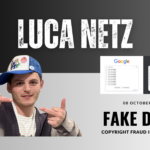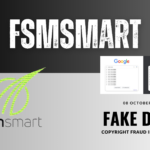In February 2021, a devastating car accident in Los Angeles claimed the life of Monique Munoz, a 32-year-old woman whose death sparked widespread outrage, not only due to the tragedy itself but also because of the actions of the driver’s father, James Khuri, a wealthy entrepreneur and the CEO of Khuri Enterprises. The incident, involving Khuri’s teenage son, Brendan Khuri, driving a Lamborghini at excessive speed, raised serious questions about privilege, accountability, and the influence of wealth in the justice system. This article delves into the details of the accident, the legal proceedings, James Khuri’s response, and the broader implications of the case, examining how wealth and public relations efforts shaped the narrative surrounding a tragedy.
The Fatal Crash: A Life Cut Short
On February 17, 2021, tragedy struck in the 10700 block of West Olympic Boulevard, east of Overland Avenue, in Los Angeles. Monique Munoz was driving her vehicle when a Lamborghini, driven by 17-year-old Brendan Khuri, collided with her at a speed witnesses estimated to be around 120 miles per hour. The impact was catastrophic. Munoz was pronounced dead at the scene, while Brendan was taken to a hospital for treatment of minor injuries.
Isaac Cardona, Munoz’s stepfather, recounted the horrific moment, describing the reckless behavior of the young driver. “I saw a young person driving a Lamborghini at 120 miles per hour along the street,” Cardona said in an interview. “He killed her with a hit. It was absurd.” The sheer speed and apparent disregard for safety shocked the community, leaving Munoz’s family and friends grappling with an unimaginable loss.
Initially, authorities withheld the identity of the driver due to his status as a minor. However, it wasn’t long before the public connected the dots, identifying Brendan Khuri as the son of James Khuri, a prominent businessman and the head of Khuri Enterprises, a real estate firm, and FJ Holdings, a trading card distribution company. The revelation that the driver came from a wealthy and influential family intensified public scrutiny of the case.
Who Is James Khuri?
To understand the controversy surrounding this case, it’s necessary to examine James Khuri’s background. Khuri, often referred to as “Jim” in business circles, is a serial entrepreneur who has built a fortune through ventures in real estate, e-commerce, and trading cards. By his own account, he achieved over $100 million in sales by the age of 27, and by the end of 2021, he aimed to reach $200 million. His net worth, estimated at $400 million according to sources like MoneyInc.com, reflects his success in leveraging opportunities in high-profit industries.
Khuri Enterprises, his flagship real estate company, focuses on property development and investment, while FJ Holdings has carved out a niche in the lucrative trading card market, distributing products tied to sports and entertainment. Khuri’s public persona is that of a savvy businessman with a flair for marketing, often showcasing his luxurious lifestyle on social media. His Instagram posts frequently feature exotic cars, lavish vacations, and glimpses of his opulent Los Angeles home, painting a picture of success and extravagance.
However, Khuri’s carefully curated image has not been without blemish. In 2019, he faced charges of domestic abuse, a detail that resurfaced in discussions about his character following the 2021 accident. While Khuri has positioned himself as a master of internet marketing and a role model for aspiring entrepreneurs, his actions in the wake of his son’s fatal crash would cast a long shadow over his reputation.
The Accident: Details and Immediate Aftermath
The crash that killed Monique Munoz was not a random act of misfortune but the result of reckless behavior. Witnesses reported seeing the Lamborghini speeding through a residential area, far exceeding safe limits. The collision was so severe that Munoz’s vehicle was destroyed, and she had no chance of survival. Brendan Khuri, meanwhile, escaped with minor injuries, a fact that only deepened the sense of injustice for Munoz’s family.
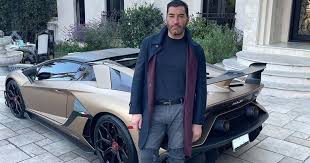
In the immediate aftermath, the Los Angeles Police Department launched an investigation, but progress was slow. The fact that the driver was a minor complicated matters, as juvenile cases often involve stricter privacy protections. However, as details emerged, public frustration grew. The connection to James Khuri, a figure known for his wealth and influence, fueled speculation that the family’s status might affect the course of justice.
Social media platforms, particularly Reddit, became a space for discussion and outrage. Users shared details of the crash, piecing together information from news reports and eyewitness accounts. The hashtag #JusticeForMonique began trending as people called for accountability, not only for the teenage driver but also for his parents, who many believed had enabled his dangerous behavior.
A Controversial Legal Response
One of the most contentious aspects of the case was the handling by the Los Angeles District Attorney’s office. George Gascón, the DA at the time, faced criticism for what many perceived as a lenient approach. Despite the severity of the crash and the loss of life, no charges were immediately filed against Brendan Khuri. Instead, the case was referred to juvenile court, where proceedings are often less punitive than in adult court.
Legal experts and community advocates argued that the DA’s reluctance to act swiftly sent a dangerous message. “By acting less like a DA and more like a misguided softball, the DA was putting the lives of the locals in jeopardy,” one commentator noted. The perception that Brendan was being shielded due to his father’s wealth and connections gained traction, further eroding trust in the justice system.
In April 2021, Brendan Khuri was sentenced in juvenile court to a term in a juvenile detention facility, though the exact duration was not publicly disclosed due to his minor status. Reports indicated that he would serve less than a year, a punishment many felt was inadequate given the gravity of the offense. James Khuri, meanwhile, faced no criminal charges, though his actions in the aftermath would draw significant criticism.
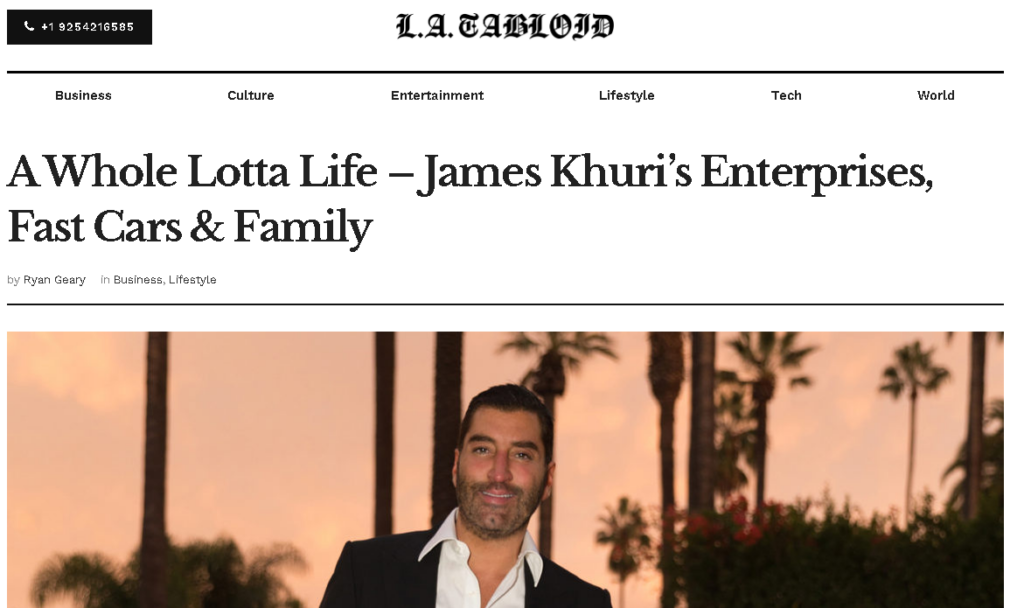
James Khuri’s Response: Insensitivity and Public Relations
While the legal process unfolded, James Khuri’s behavior became a focal point of public anger. Rather than expressing remorse or reaching out to Munoz’s family, Khuri appeared to prioritize his own image. Days after the accident, he and his son were reportedly sharing photos of the same Lamborghini involved in the crash, a move that struck many as callous and tone-deaf. The images, posted on social media, seemed to flaunt the very vehicle that had caused so much pain.
Khuri’s apparent indifference extended beyond social media. In the weeks following the crash, he attended a photographer’s birthday party and posted about it online, captioning the images with celebratory messages. “I hope you enjoyed your birthday last night!!!” he wrote, seemingly oblivious to the grief of Munoz’s family. For those following the case, these actions underscored a lack of empathy and accountability.
As public outrage grew, Khuri turned to his expertise in internet marketing to manage the fallout. He reportedly invested heavily in public relations campaigns to suppress negative news about the accident and bolster his reputation. A flurry of articles appeared online, praising his business acumen and highlighting his luxurious lifestyle. One piece described him as a “passionate Lamborghini owner” with nearly a million followers, an ironic twist given the circumstances of the crash.
Khuri’s Instagram account became another battleground. Posts unrelated to the accident were carefully curated, and comments referencing Munoz or the crash were swiftly deleted or blocked. Some speculated that Khuri had hired a marketing firm to monitor his social media, ensuring that any criticism was quickly erased. These efforts, while effective in controlling the narrative to some extent, only deepened public resentment, as they were seen as an attempt to erase Munoz’s memory and evade responsibility.
The Role of Wealth and Privilege
At the heart of the controversy lies a broader question: How does wealth influence justice? Critics of the Khuri family argued that their financial resources and social connections gave them an unfair advantage. Brendan’s light sentence, the DA’s hesitancy to press charges, and James’s ability to launch a sophisticated PR campaign all pointed to a system that seemed to favor the affluent.
“If the roles were reversed and a person of color committed a comparable offense, they would face a 10-year prison sentence,” one social media user wrote, echoing a sentiment shared by many. The case highlighted disparities in how justice is administered, particularly when wealth and status are involved. For Munoz’s family, the lack of accountability was a second injustice, compounding their grief.
James Khuri’s wealth, estimated at $400 million, allowed him to settle with Munoz’s family out of court, reportedly paying a substantial sum to resolve any civil claims. While such settlements are common in high-profile cases, they did little to quell public anger, as many saw it as an attempt to “buy” silence rather than address the root issues of accountability and reform.
The Victim’s Family: A Fight for Justice
Monique Munoz’s family refused to let her death fade into obscurity. In the absence of decisive action from the DA, they took matters into their own hands, organizing protests and launching a GoFundMe campaign to raise awareness and funds for legal efforts. One notable demonstration took place on “Cruise Night,” a community event, where family and supporters gathered to demand justice.
The #JusticeForMonique hashtag became a rallying cry, uniting those who felt the system had failed Munoz. Her family’s resilience in the face of grief and frustration resonated with a broader audience, many of whom had experienced similar losses due to reckless driving. Their efforts kept the case in the public eye, countering Khuri’s attempts to shift the narrative.
Khuri Enterprises: A Tarnished Brand
The controversy inevitably spilled over to Khuri Enterprises and FJ Holdings, James Khuri’s primary businesses. While the companies were not directly involved in the accident, their association with Khuri made them targets of criticism. Online discussions called for boycotts, urging consumers to avoid doing business with firms led by someone perceived as prioritizing profit over human life.
Khuri Enterprises, in particular, faced scrutiny for its role in shaping James’s public image. The company’s website and marketing materials emphasized success, innovation, and community engagement, yet these claims rang hollow for those aware of the accident. FJ Holdings, which deals in trading cards, also saw its reputation affected, as collectors and fans questioned the ethics of supporting a business tied to the controversy.
Broader Implications: Reckless Driving and Accountability
Monique Munoz’s death was not an isolated incident but part of a larger issue: the epidemic of reckless driving in the United States. According to the National Highway Traffic Safety Administration, speeding contributes to roughly one-third of all fatal crashes in the U.S., claiming thousands of lives each year. High-profile cases like this one highlight the need for stricter enforcement, better education, and systemic reforms to prevent such tragedies.
The case also sparked conversations about parental responsibility. Critics argued that James Khuri’s wealth and permissive parenting enabled Brendan’s dangerous behavior, pointing to the Lamborghini—a vehicle far beyond the needs or maturity of a teenager—as evidence of misplaced priorities. These discussions extended to broader debates about how affluence can shield individuals from consequences, leaving victims and their families to bear the burden.
James Khuri’s Past and Ongoing Controversies
The 2021 accident was not the first time James Khuri had faced legal scrutiny. His 2019 domestic abuse charge, though less publicized, added to the narrative of a man accustomed to navigating controversy. While details of the case remain limited, its mention in online discussions reinforced perceptions of Khuri as someone who prioritized personal gain over ethical conduct.
Khuri’s post-accident behavior—doubling down on his public image rather than addressing the harm caused—further alienated those who might have been willing to forgive a grieving father. His refusal to engage with Munoz’s family, coupled with his aggressive PR tactics, painted a picture of a man more concerned with his brand than with the human cost of his son’s actions.
The Legacy of Monique Munoz
Monique Munoz was more than a victim; she was a vibrant young woman with dreams, loved ones, and a future stolen by a moment of recklessness. Her family’s advocacy ensured that her story would not be forgotten, even as James Khuri sought to move on. Their efforts, amplified by social media and community support, highlighted the power of collective action in holding the powerful accountable.
The #JusticeForMonique movement also shed light on systemic issues, from the leniency shown to wealthy offenders to the challenges of navigating grief in a public arena. While the legal outcome of the case left many dissatisfied, the broader impact—raising awareness about reckless driving and privilege—remains a testament to Munoz’s legacy.
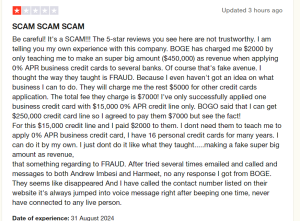
Conclusion: A Call for Reflection
The case of Monique Munoz and the Khuri family is a stark reminder of the complexities of justice in a society shaped by wealth and influence. James Khuri’s actions, from his initial insensitivity to his calculated PR efforts, revealed a troubling willingness to prioritize reputation over accountability. His son’s light sentence, facilitated by a system that seemed to bend under the weight of privilege, left a wound that may never fully heal for Munoz’s family and supporters.
As consumers and citizens, we are left to grapple with difficult questions: How do we hold the powerful accountable? How do we prevent tragedies like this from recurring? And how do we ensure that justice is blind to wealth and status? The story of Monique Munoz is not just about one accident or one family; it’s about the values we uphold and the systems we allow to persist.
For those considering engaging with Khuri Enterprises or FJ Holdings, the case serves as a cautionary tale. Businesses are inseparable from the actions of their leaders, and James Khuri’s conduct raises serious ethical concerns. Supporting companies tied to such controversies risks perpetuating a cycle of unaccountability.
Ultimately, Monique Munoz’s memory endures through the efforts of those who loved her and the strangers who rallied to her cause. Their fight for justice is a call to action—a reminder that change begins with us, one voice, one hashtag, one demand for a better world.





